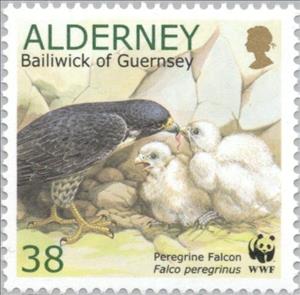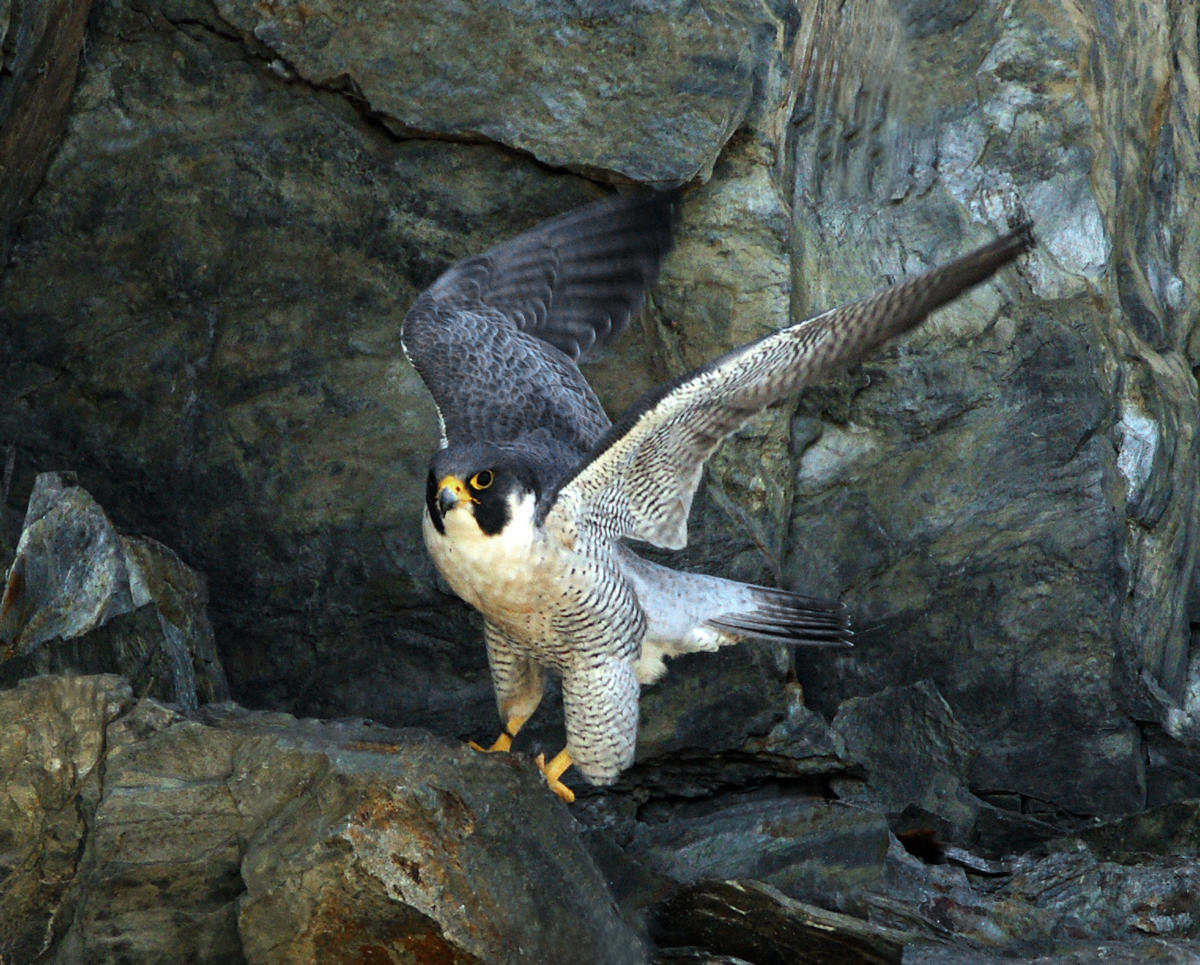Stamp: Peregrine Falcon (Falco peregrinus) feeding Fledgling (Alderney 2000)
Peregrine Falcon (Falco peregrinus) feeding Fledgling (Alderney 2000)
04 February (Alderney ) within release Endangered Species goes into circulation Stamp Peregrine Falcon (Falco peregrinus) feeding Fledgling face value 38 Guernsey penny
| Stamp Peregrine Falcon (Falco peregrinus) feeding Fledgling in catalogues | |
|---|---|
| Michel: | Mi:GG-AL 148 |
| Stanley Gibbons: | Sg:GG-AL 143 |
Stamp is horizontal format.
Also in the issue Endangered Species:
- Stamp - Peregrine Falcon (Falco peregrinus), Ruddy Turnstone (Arenar face value 21;
- Stamp - Peregrine Falcon (Falco peregrinus) with Prey face value 26;
- Stamp - Peregrine Falcon (Falco peregrinus) guarding Eggs face value 34;
- Stamp - Peregrine Falcon (Falco peregrinus) feeding Fledgling face value 38;
- Stamp - Peregrine Falcon (Falco peregrinus) with Prey face value 44;
- Stamp - Peregrine Falcon (Falco peregrinus) two fully-fledged face value 64;
Stamp Peregrine Falcon (Falco peregrinus) feeding Fledgling it reflects the thematic directions:
Birds (Aves), a subgroup of Reptiles, are the last living examples of Dinosaurs. They are a group of endothermic vertebrates, characterised by feathers, toothless beaked jaws, the laying of hard-shelled eggs, a high metabolic rate, a four-chambered heart, and a strong yet lightweight skeleton. Birds live worldwide and range in size from the 5 cm (2 in) bee hummingbird to the 2.75 m (9 ft) ostrich. They rank as the class of tetrapods with the most living species, at approximately ten thousand, with more than half of these being passerines, sometimes known as perching birds. Birds are the closest living relatives of crocodilians.
Mammals are any vertebrates within the class Mammalia (/məˈmeɪli.ə/ from Latin mamma "breast"), a clade of endothermic amniotes distinguished from reptiles (including birds) by the possession of a neocortex (a region of the brain), hair, three middle ear bones and mammary glands. All female mammals nurse their young with milk, secreted from the mammary glands. Mammals include the largest animals on the planet, the great whales. The basic body type is a terrestrial quadruped, but some mammals are adapted for life at sea, in the air, in trees, underground or on two legs. The largest group of mammals, the placentals, have a placenta, which enables the feeding of the fetus during gestation. Mammals range in size from the 30–40 mm (1.2–1.6 in) bumblebee bat to the 30-meter (98 ft) blue whale. With the exception of the five species of monotreme (egg-laying mammals), all modern mammals give birth to live young. Most mammals, including the six most species-rich orders, belong to the placental group. The largest orders are the rodents, bats and Soricomorpha (shrews and allies). The next three biggest orders, depending on the biological classification scheme used, are the Primates (apes and monkeys), the Cetartiodactyla (whales and even-toed ungulates), and the Carnivora (cats, dogs, seals, and allies).
Birds of prey or predatory birds, also known as raptors, are hypercarnivorous bird species that actively hunt and feed on other vertebrates (mainly mammals, reptiles and smaller birds). In addition to speed and strength, these predators have keen eyesight for detecting prey from a distance or during flight, strong feet with sharp talons for grasping or killing prey, and powerful, curved beaks for tearing off flesh. Although predatory birds primarily hunt live prey, many species (such as fish eagles, vultures and condors) also scavenge and eat carrion
Animals are multicellular, eukaryotic organisms of the kingdom Animalia (also called Metazoa). All animals are motile, meaning they can move spontaneously and independently, at some point in their lives. Their body plan eventually becomes fixed as they develop, although some undergo a process of metamorphosis later on in their lives. All animals are heterotrophs: they must ingest other organisms or their products for sustenance.
Adult falcons have thin, tapered wings, which enable them to fly at high speed and change direction rapidly. Fledgling falcons, in their first year of flying, have longer flight feathers, which make their configuration more like that of a general-purpose bird such as a broad wing. This makes flying easier while learning the exceptional skills required to be effective hunters as adults.





